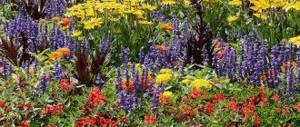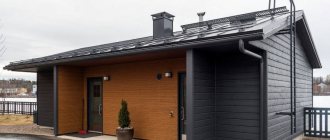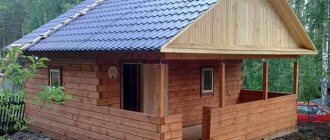Annuals blooming profusely in a flowerbed
Direct sowing into the ground
These plants, which do not like replanting, are sown immediately in a permanent growing place at the end of the second - beginning of the third month of spring or before winter. The flowers open in abundance, continuously from June-July until frost. Preferred places for summer cottage plantings are sunny, watering and fertilizing may be practically absent - whatever Mother Nature provides, that’s what they get by with.
They are often included in the Moorish lawn. They can self-sow.
Cornflower
Modern varieties are varied in height (20-80 cm), degree of terry, color (not only blue, but also white, pink, burgundy, red, black). The size of the corolla is 4-8 cm. A special variety is musk cornflower with a spicy aroma (snow-white, pinkish, lilac).
Eschszolzia
The flowers resemble poppies in miniature (4-5 cm). The traditional color is orange, but there are varieties of white, yellow, pink, and crimson colors, including terry. The foliage is openwork, with a silvery tint. The bushes grow 20-50 cm. In the absence of tall competitors, they perfectly “braid” the entire area of the flower beds.
Godetia
The color scheme is similar to Eschscholzia, only in slightly more pastel colors. The most delicate corollas can be simple or double, like miniature roses. Their size is from 5 to 8 cm. Peduncles rise 20-90 cm (depending on the variety).
Clarkia
Branched stems grow upward by 30-90 cm. Carved or double flowers 3-5 cm in size sit in bunches in the leaf axils at the ends of the shoots. Petals can be any shade of red-pink, as well as white, orange, purple-violet. Plants develop best on slightly acidic peat soils.
Simple seedlings
Dahlias (Jolly guys)
Modern varieties of annual dahlias amaze the imagination with their diversity. Height - from 25 cm to one and a half meters. Corollas - simple, with a “collar”, semi-double, terry, pompom, cactus-shaped. The diameter of the inflorescence is from 6 to 15 cm. Any color (except blue). There are varieties whose stems and foliage have a chocolate or burgundy hue.
The plants are light-loving and heat-loving, but the first frost will destroy them. The seedlings develop well in outdoor garden greenhouses. For low-growing varieties, it is possible to sow in May in a permanent place (with temporary shelter). Branched bushes are covered with numerous inflorescences from mid-summer until the first frosty nights.
Purslane
Long branches spread along the ground, towering only 10-20 cm above it. The bright blooming “rug” pleases the eye all summer, although each flower is allotted only one day of existence. Simple or terry “cups” with a diameter of 3-6 cm are painted in a variety of rich colors (except blue and dark blue).
Plants need very bright light, then they can grow even on stones, clinging to a tiny piece of earth; easily tolerate heat. The roots do not tolerate stagnant moisture and do not like peat soil. They are more comfortable on poor sandy soil.
We sow seedlings from February and, in fact, until April. Simple varieties are capable of self-seeding, which develops quickly and forms buds early.
Phlox drummond
Annual phlox resembles its perennial counterpart (phlox paniculata), except in the shape of the flowers. True, in phlox drummond they are smaller (1-4 cm), but they bloom continuously from early summer until late (in other areas) autumn, and are not afraid of the first frosts. The color of the inflorescences can be absolutely any (except black). Two-color, star-shaped and terry corollas are especially original. Rich colors do not fade in the sun or fade from rain. The bushes are low (from 15 to 50 cm), but very branched; bloom with a “cap”. An added bonus is the exquisite aroma.
It is possible to sow immediately in a permanent place - before winter or in May. But for earlier flowering, it is better to prepare March seedlings. The culture does not tolerate shading and excess humidity.
Verbena
It is a rare annual that can match the flowering duration of verbena. Seedlings sown in February-March produce inflorescences throughout the warm period - spring-autumn, and can easily withstand September frosts. You can try to sow verbena before winter (in spring) in open ground, but in this case the seedlings will bloom later than early spring seedlings. For comfort, the plant needs good lighting, limed soil, and the absence of dampness.
Verbena flowers are small - 1 cm (maximum - 3 cm), but they are collected in fragrant umbrellas with a diameter of 5-10 cm. Colors - all kinds (except yellow), pastel or very bright, often with a contrasting white “eye”. The most popular are low-growing varieties (20-35 cm), but no less interesting are medium-sized (45-60 cm) and even giant (Verbena Bonarskaya 1.2 meters), as well as hanging ones.
Mirabilis
The popular name is “night beauty”, although in rainy or cloudy weather all the flowers also open. The plant greets the dawn with closed buds. They begin to open during the day and continue to bloom in the evening and at night, emitting a light, pleasant scent. Small flowers 2-3 cm in size are painted in a variety of bright colors, variegated and marbled colors are not uncommon. The bushes rise 0.5 - 1 meter above the ground.
Seedlings are ready for transplanting at the age of 3-4 weeks. You should wait until it warms up; negative temperatures will destroy the seedlings. Mirabilis does not tolerate swampy, acidic soils; responds well to liming. Loves sunny places.
Snapdragon (Antirrinum)
This fragrant summer tree decorates the garden from June (July for the northern regions) until the coldest weather. The size of an individual two-lipped flower is only 2-4 cm, but dense clusters of inflorescences are formed from them. The colors are rich and varied (there is only a blue tone). Varieties have been developed: variegated, two-color, double, ampelous, super-dwarf (15 cm) and supergiant (100 cm).
Seedlings begin to grow in early March and are transferred to the ground at the end of spring. Bushes in the country prefer sun or partial shade. The soil needs to be nutritious, not too wet.
Garden balsam
Now it is fashionable to plant the latest indoor varieties of Waller's and New Guinea balsams as annuals. But many have undeservedly forgotten the unpretentious garden balsams of a pyramidal shape, growing 25-70 cm. The flowers are placed on the stem from top to bottom, sitting in bunches in the leaf axils. The corollas, 5 cm in size, are simple or double, in various shades: white, scarlet, crimson, pink, purple. When planting them, we will be guaranteed decoration of the country flower bed throughout most of the summer and early autumn. Impatiens, including low-growing ones that creep along the ground, love slight shading and regular watering. Especially decorative in rainy seasons. In this case, the soil needs to be permeable, without stagnant water. We begin to grow seedlings in March - April.
Osteospermum (Cape daisy, African chamomile)
The flower looks like a daisy, but in its noble appearance it resembles a gerbera. The bushes delight with abundant flowering until the autumn cold. Varieties are low-growing (25 -30 cm), medium-growing and tall (from 0.7 to 1 meter). The most common colors of the corollas are lilac, purple, blue, pink and white, while orange and yellow are less common. There are exotic varieties with petals in the form of “spoons” - flattened on the sides in the central part.
We begin to grow seedlings in early or mid-spring; especially impatient gardeners - already in January-February (with additional lighting). We move the plants to the country flower bed after frost - to a sunny place with nutritious soil.
Celosia
There are two types of celosia - pinnate (paniculate) and comb. Each is magnificent in its own way.
Comb celosia inflorescences resemble ruffled cockscombs or fancy corals. Plant height is 30-60 cm.
Cirrus celosia blooms with fluffy panicles. There is also a spicate variety - with narrower and elongated inflorescences. Growth varies greatly among varieties - from 15 cm to 1 meter.
Celosia inflorescences are painted in shades of red, yellow and orange; There are also variegated (multi-color) and purple ones. The varieties with purple foliage are especially decorative.
Plants love well-lit areas and fertilized soil. Sowing seedlings is necessary no later than the first ten days of April.
Petunia
Some petunias are quite capricious and demanding of nutrition. But there are many unpretentious varieties. You can collect your seeds from them annually, sowing them for seedlings in March-April. Compact, fragrant plants of various colors will decorate a sunny flowerbed throughout the summer. They will enjoy simple care: timely removal of faded corollas, regular watering, and standard fertilizing.
Tobacco (Nicotiana)
- from June to October,
- bush from 30 to 80 cm high,
- white, pink, red, greenish and other shades,
- seedlings, sown in April or sown in open ground in early spring or late autumn.
To all these flowers, which bloom all summer long, I would also include eschscholzia (California poppy), zinnia, and horned violet, which we have already talked about. Although some of them are perennial, we grow them as annual flowers.











